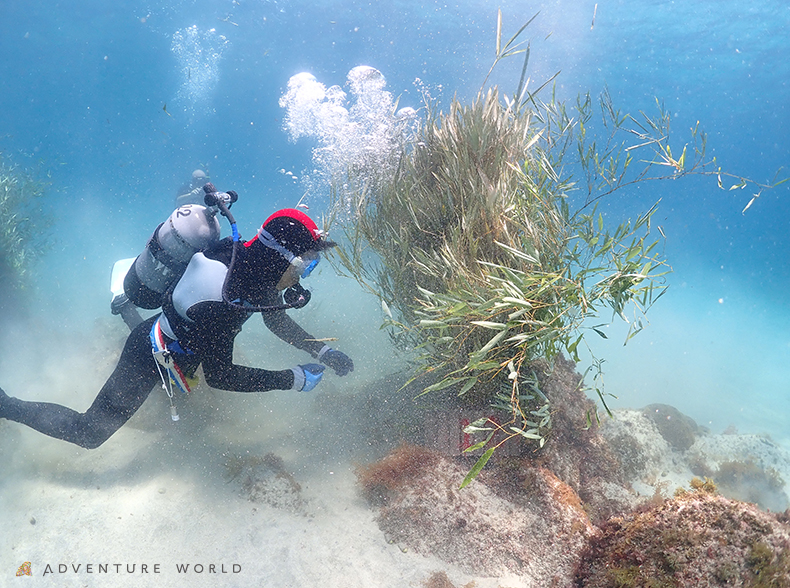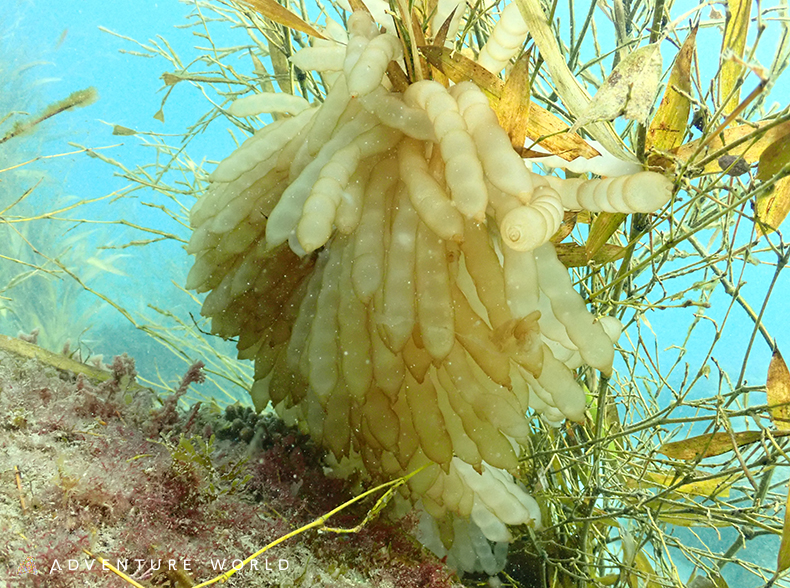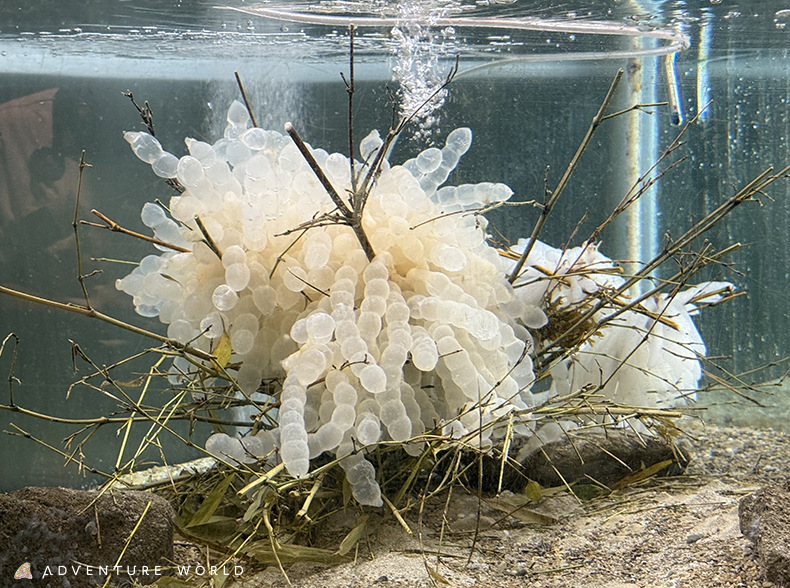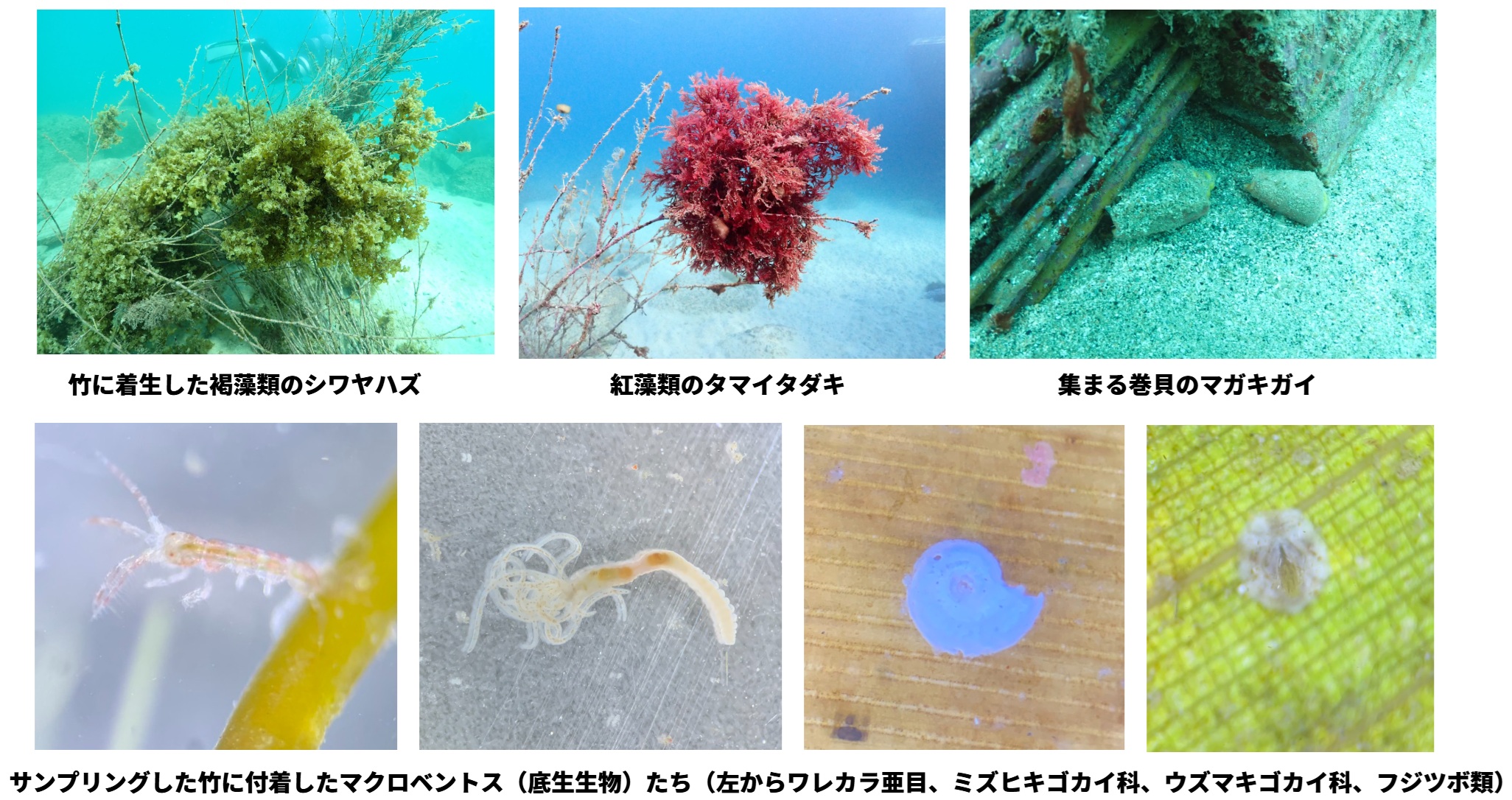“パンダバンブープロジェクト”パンダが食べ残した竹に今年もアオリイカの産卵を確認!4年連続のいのちの循環 パンダの竹を調達してきた岸和田市でも設置をスタート

アドベンチャーワールドは、ジャイアントパンダが食べ残した竹を再活用したアオリイカの産卵床プロジェクトにおいて、2025年シーズンも産卵が確認されたことをご報告します。これにより、プロジェクト開始から4年連続の産卵成功となります。また7月3日に、大阪府岸和田市の漁港で初めて産卵床を設置しました。この設置には、6月28日に中国へ帰国したパンダたちへ最後の食事として用意した竹の食べ残しが活用され、命のバトンが新たな舞台へとつながれました。
ポイント
①4年連続で産卵成功
②卵塊の一部を、今年も京都大学白浜水族館で展示中
③6月28日に帰国した4頭のパンダが食べ残した「最後の竹」を、岸和田市の漁港に設置

■4年連続の産卵確認と展示
6月に白浜町の伊古木漁港に設置した30基のうち、すでに22基に産卵を確認しました。卵塊の一部を京都大学白浜水族館で展示し、孵化までの様子を来館者のみなさまにご覧いただきます。
<展示について>
・場所
京都大学白浜水族館(和歌山県白浜町)
・期間
2025年7月2日(水)~10月下旬を予定
孵化後は稚イカを海に放流し、新しく産卵した卵塊を展示します。
・時間
午前9時~午後5時 開館中ご覧いただけます。
・展示
水槽内でパンダが食べ残した竹に産卵されたアオリイカの卵塊をご覧いただけます。運がよければ卵から孵化するシーンをご覧いただけるかもしれません。
・放流
7月13日(日)より水槽内で孵化が始まり、7月21日(月)時点で705匹が孵化し、すでに近海へ放流しています。

京都大学白浜水族館での展示の様子
■岸和田市で初設置
これまでジャイアントパンダの食事用の竹を調達してきた大阪府岸和田市で、今シーズン初めて市内の漁港へ21基を7月3日(木)に設置しました。パンダ帰国前に最後に食べ残した岸和田市の竹の枝葉を使用し、岸和田市立修斉小学校6年生の児童のみなさまと産卵床の製作と設置を行いました。長年、岸和田市から提供いただいた竹が、初めてその土地の海で新たな命を育む場として活用されることになりました。今後はモニタリング調査を通じて、アオリイカの産卵の有無や付着⽣物の確認を行ってまいります。
■今後について
・白浜町伊古木漁港に設置した30基、岸和田市漁港の21基それぞれの産卵状況と、付着する海藻類と生物の調査を継続的に実施します。
・京都大学による環境DNA調査(eDNA調査)を実施します。海中に漂う生物由来のDNAを水から採取・解析することで、人が近付くと逃げてしまい、潜水調査でも種類や数を確認しにくいアオリイカやその他魚類の存在や個体数の変化を把握する先端的な調査手法です。設置前後で海の生物相がどう変化したのか、科学的に検証します。
■本活動の背景と今後の展望
白浜の海では、近年の海水温の上昇や藻類を食べる魚の分布拡大により、アオリイカの産卵に適した海藻が減少しています。一方、里山では放置竹林の増加が課題となっており、竹の管理と活用が求められています。アドベンチャーワールドでは、伐採した竹をジャイアントパンダの食事として利用してきましたが、パンダは枝葉の一部しか食べないため、食べ残しが大量に発生します。その残った竹を束ねて海に沈め、アオリイカの産卵床や小型生物の生息基盤として再活用する取り組みを2022年から実施しています。2025年6月にパンダは中国へ帰国しましたが、本活動は自然環境の保全と地域との連携を目的とした継続的なプロジェクトとして、今後も実施していきます。また、アオリイカが藻類食性魚類の稚魚を捕食することが確認されており、磯焼け対策の一助となる可能性もあります。さらに、沈めた竹には巻貝などが集まり、竹が分解された有機物が海中の栄養循環に寄与する可能性も示されています。今後も調査と活用を進めながら、自治体・教育機関・地域の住民や漁業関係者など多様な主体と連携し、里山と里海をつなぐ広域的な環境保全モデルの構築を目指します。
【共催】
白浜町、岸和田市、京都大学瀬戸臨海実験所
【協力】
アオリコミュニティ、大阪府漁業協同組合連合会、きしわだ自然資料館、岸和田市教育委員会、岸和田市立修斉小学校、株式会社 恭兵船舶、小出渡船、トライブダイビングスクール、ヒロメラボ、和歌山南漁業協同組合(五十音順)
昨シーズン(2024年)活動の成果
①アオリイカの産卵成功と孵化
・設置した64基の大半にアオリイカの産卵を確認
・京都大学白浜水族館で展示した卵から、2,641匹の稚イカが孵化し、放流

②沿岸生態系への貢献
・竹に着生した海藻類
シワヤハズ、タマイタダキなどの海藻類が確認され、海藻の成長基盤となることを確認
・付着生物
甲殻類(ワレカラ、フジツボ)、ゴカイ類、巻貝類の卵塊などが竹に付着していることを確認
・生態系の回復の兆し
海藻の増加 → 小型生物の生息数増加 → 生物多様性の向上が期待される

③普及活動の成果
・京都大学白浜水族館での展示期間中には、延べ19,281人が来館し、多くの方々が活動に触れる機会となりました。
・また、白浜町立日置中学校の生徒や、岸和田市立修斉小学校・白浜町立富田小学校の児童も産卵床の製作と設置体験に参加し、沿岸環境への理解を深める貴重な学びの場となりました。

